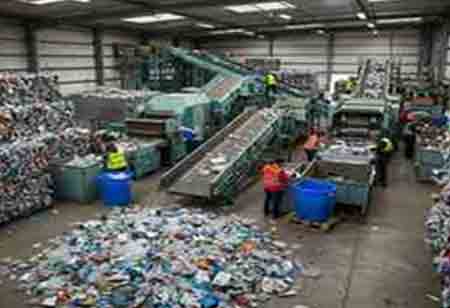Thank you for Subscribing to Environmental Business Review Weekly Brief
Restoring Polluted Environments: Key Environmental Remediation Methods
Environmental remediation techniques, such as bioremediation and physical and chemical methods, are crucial for restoring polluted environments and improving ecosystem habitats for future generations.

By
Environmental Business Review | Tuesday, October 22, 2024
Stay ahead of the industry with exclusive feature stories on the top companies, expert insights and the latest news delivered straight to your inbox. Subscribe today.
Environmental remediation techniques, such as bioremediation and physical and chemical methods, are crucial for restoring polluted environments and improving ecosystem habitats for future generations.
Fremont, CA: Environmental remediation is critical to reverse soil, water, and air pollution. It may also lead to ecosystem restoration, thus preventing public health threats. Encouraging industrial activities and even urbanization, which continue to cause enormous pollution, means remediation techniques are needed to solve these problems.
Bioremediation is one of the widely applied methods where microorganisms break down pollutants in soil and water. It involves introducing particular microorganisms into the contaminated environment. This process enhances the degradation of hazardous materials or substances such as petroleum hydrocarbons or heavy metals. This process is low in cost, minimally intrusive, and might sometimes be done in situ, which does not require excavation and transport.
Chemical remediation is a procedure that neutralizes or removes contaminants in the environment with chemical agents, often coupled with chemical oxidation. This method works mainly effectively for treating a contaminated water source, such as groundwater. It is combined with other techniques to enhance effectiveness, and proper management of its application should prohibit secondary pollution.
Physical remediation techniques place more emphasis on the removal or containment of the contaminants through physical means. Other examples include soil excavation, which removes contaminated soil from the treatment or a licensed facility. This technique is appropriate for local contamination but could be intrusive and expensive. The other physical methods include the installation of barriers to contain the contaminants and prevent further spreading. Others include the use of pumps to extract contaminated groundwater. Physical remediation may show short-term effectiveness but is often viewed as an ongoing check-in of containment strategies since it may continue to be a problem.
Phytoremediation gives the ingenuity of using plants to absorb, break down, or stabilize contaminants in soil and water. Specifically, some plant species can take up heavy metals and other pollutants via their root systems, thereby cleaning the environment over time. This method is cost-effective and environmentally friendly, given its ability to improve aesthetic value in contaminated sites. However, this process usually takes longer than most other techniques, and it may involve the informed choice of the species of plants that are particularly suitable to the contaminants at hand.
Electrokinetic remediation is a new technique in which the electric field is applied to enhance the mobilization of contaminants in soil and groundwater. Such a design facilitates pollutant transport toward electrodes for subsequent extraction or treatment. Electrokinetic remediation is highly effective for heavy metals and can be integrated with other treatment methods.
Thermal remediation is a method of using heat to treat polluted soils or groundwater. Some techniques applied are thermal desorption and in-situ thermal treatment, for which heat energy can vaporize or break down organic materials to remove or degrade them quickly. Such a remedy may be excellent for addressing some types of contamination but is also very costly and energy-consuming.





